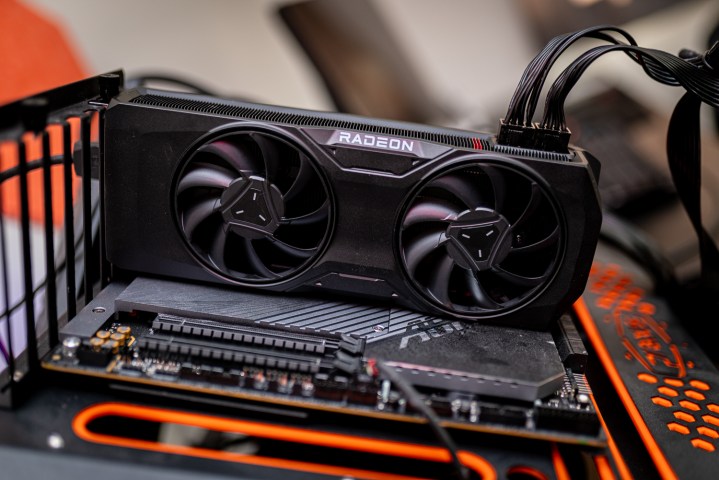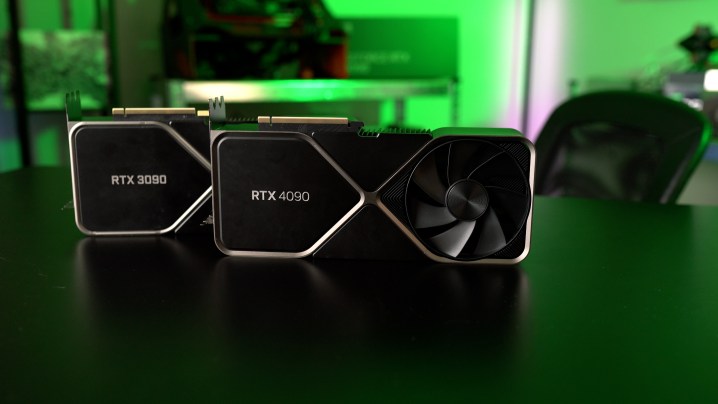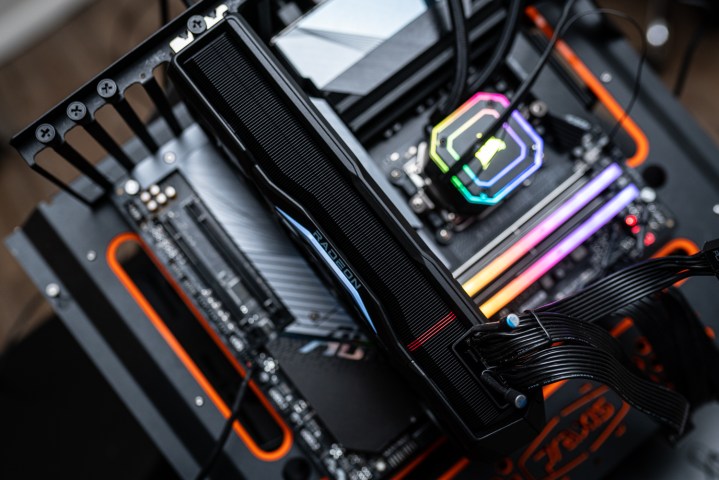We’re about to enter a new era of GPUs, with Nvidia, AMD, and Intel duking it out for slots among the best graphics cards. But this time around, things are different. Team Red, which has traditionally served as a downward force on prices against much more popular Nvidia GPUs, is caught in the middle of a graphics card market that’s headed in two vastly different directions.
Although AMD has yet to formally unveil its RDNA 4 graphics cards, the company has confirmed that it’s coming early next year. The details about AMD’s next-gen GPUs are still up in the air, but you don’t need any official specs or benchmarks to see the precarious position that AMD is in. The company’s next-gen graphics cards already have two big problems — Nvidia, which likely will pursue flagship dominance, and AMD itself.
A picture of what’s coming

AMD hasn’t shared official details about its next-gen graphics cards yet, but the company has painted a clear picture about where the card will end up. AMD has said it doesn’t want to play “king of the hill” with Nvidia, all but confirming months of speculation that AMD will skip the battle for flagship dominance in order to focus on midrange GPUs.
The latest rumors suggest that the card AMD will lead this initiative with is the RX 9070 XT. That’s not a typo. Rumor has it that AMD is changing its naming convention once again for RDNA 4 graphics cards. According to leaked benchmarks, this card should perform around the level of an RTX 4070 Ti or RX 7900 GRE. That falls in-line with AMD’s strategy this generation. If the leaked benchmarks are accurate, AMD is offering performance of a graphics card in the $600 to $700 price range from the current generation, and I suspect for a lower price.
Other rumors claim it’ll be slightly faster — somewhere near the performance of an RTX 4080. Where exactly it falls isn’t important right now, however. What’s important is that all signs points to AMD falling below the threshold of what would be considered a next-gen flagship GPU. That’s doubly true when you consider the rumored performance of Nvidia’s RTX 5090, which leakers claim could be as much as 70% faster than the current RTX 4090.
It looks like AMD is focused on that sweet spot of gaming performance we’ve seen over the past several generations, filled with cards around $500 like the RTX 4070 and RX 7800 XT. That seems like a winning strategy with Nvidia pushing flagship prices well above $1,000 and Intel target gamers with sub-$300 budgets. But it puts AMD between a proverbial rock and hard place, as it’s caught in the middle of conflicting pricing strategies.
Always battling context

It’s important to keep in mind that a new graphics card needs context. You can’t look at a GPU in a vacuum. The RTX 4090 from this generation is a prime example of that. Anyone can run the benchmarks and see it’s stupid fast, and you can even compare it to a last-gen GPU like the RTX 3090 to see the generational uplift. But is it worth the asking price? Will the RTX 4080 offer a significantly better value? These are the kinds of questions that are impossible to answer when a new generation starts. You need context.
Nvidia, as the clear market leader, usually sets that context. Looking at the previous generation, AMD’s RX 7800 XT isn’t a good GPU just because. It’s a good GPU because it offers comparable and sometimes better performance than Nvidia’s RTX 4070, and for $100 less. Nvidia’s dominant position means that it sets the tone for a generation, and in most cases, the merits of a GPU from AMD or Intel are judged based on how they compare to Nvidia. I’m not saying this is the way things should be, but it’s the way things are.

It looks like the next wave of graphics cards will arrive around the same time. Nvidia is tipped to launch its RTX 50-series GPUs at CES 2025, as is AMD. I don’t have crystal ball, but it’s looking like we’ll have a new flagship from Nvidia next month, as well as AMD’s top card from its RDNA 4 range, which is targeting that sweet spot price. It should go without saying that there’s no way to compare these two GPUs. They’re in completely different classes. They completely lack context.
If this is the setup going into the next generation, I can already tell you the question everyone will be asking: What will Nvidia’s answer to AMD’s top GPU be? Nvidia may launch some crazy flagship north of $1,000, and some crazy PC gamers (myself probably among them) will buy it. But without AMD competing at that level, all eyes will be on Nvidia’s answer to AMD. The question will be what Nvidia can deliver around the same price.
That works against AMD. There will be some who go out and buy AMD’s next-gen graphics card, but many more who will likely hold out until more of Nvidia’s lineup is revealed. It also gives Nvidia an opportunity to adjust its strategy at that sweet spot price, which is something we saw in this generation. Not only did we get a price drop and rebrand on the RTX 4080 12GB — it eventually turned into the RTX 4070 Ti for $100 cheaper — we also saw Nvidia’s Super refresh, with cards like the RTX 4070 Super designed specifically to combat AMD’s offerings.
Moving backward

Launching directly into the midrange also sets AMD up against itself. Let’s do a hypothetical. Let’s say the RX 9070 XT — or whatever the GPU ends up being called — is around 5% slower than an RX 7900 XT and around 20% faster than an RX 7800 XT, and it comes in at $650. So, you’d be getting a GPU that’s near the performance of what would cost you $900 in the previous generation with the RX 7900 XT, and much better performance than AMD’s $550 to $600 offering with the RX 7800 XT.
That sounds like a good deal until you consider that you can buy an RX 7900 XT for $650 right now, and even less on sale. Keep in mind that I’m completely making up these numbers and points of comparison, but it’s a good illustration of the issues with AMD’s more reserved approach in the upcoming generation. AMD’s new midrange GPU will likely be competing with more expensive offerings from the previous generation that, due to their time on store shelves, have significantly fallen in price. And unlike previous generations where AMD would have suitable replacements for each card in its lineup, there’s a very good chance those last-gen GPUs will be more powerful.
There’s a very delicate balancing act AMD needs to play, which might make the RX 9070 XT a disappointing GPU. On one hand, the card needs to be priced competitively enough to compete with the falling prices on AMD’s last-gen options. And on the other, it can’t be so inexpensive as to completely undermine (and therefore crater) the prices on AMD’s last-gen options. It has to stick the landing flawlessly, which is a tough ask.
I’m excited to see what the next generation of graphics cards will bring, from flagship offerings clearing $1,000 all the way down to 1080p workhorses duking it out around $300. Next month when the generation is expected to kick off, though, I suspect the situation will be fuzzy. Unlike something like Intel’s recent Arc B580, which is a very compelling offering at $250 regardless of the context, the battle for AMD in the next generation will be wrought with last-gen comparisons and Nvidia competition that Team Red won’t hope to combat.
I’m not saying AMD’s next GPU will be bad, and if everything clicks in place correctly, it might be an exciting option — that’s certainly what our very own Monica J. White seems to believe. Regardless of how it ends up turning out, one thing is for sure. The next few months will be a very exciting time for graphics cards.





